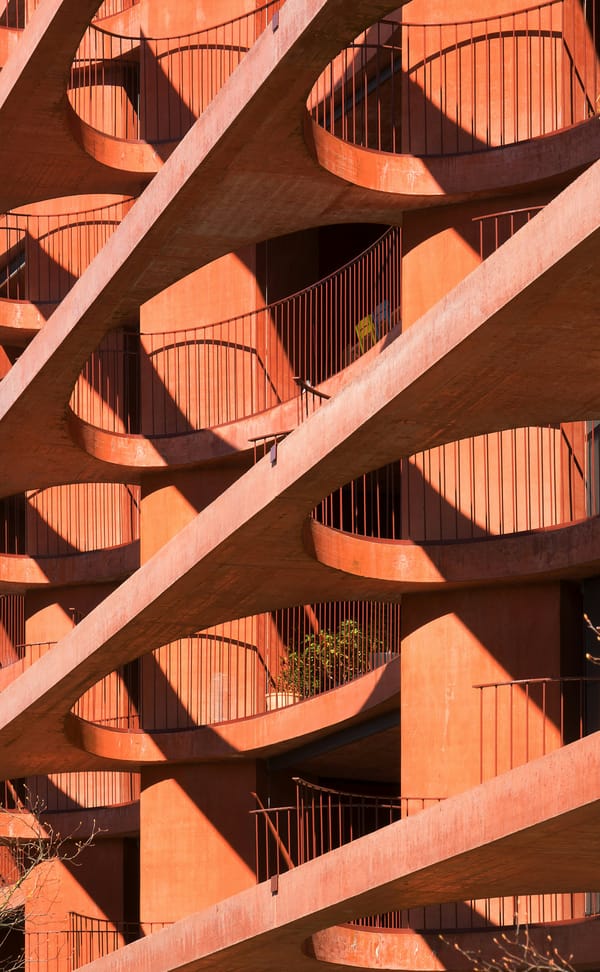Fluid Geometry
People
“Fluid Geometry” explores the intersection of natural movement and mathematical precision in architectural design. It captures the elegance of curves, the rhythm of repeating patterns, and the sensation of space in motion.

This theme celebrates structures that defy rigid boundaries, evoking organic beauty while maintaining structural integrity through geometric order.
Article:
Fluid Geometry: The Harmony of Movement in Architecture
Architecture has long been a dialogue between form and function, structure and aesthetics. In the modern era, a new language is emerging—one that blends the mathematical elegance of geometry with the flowing dynamics of natural forms. This is the essence of Fluid Geometry, a concept where architecture is no longer confined to static lines and angles, but breathes, bends, and responds like a living organism.
The image above perfectly embodies this theme. The building’s exterior seems to ripple with motion, its tiled surface forming a kinetic skin that draws the eye along graceful curves. The use of repeating diamond-shaped tiles enhances the illusion of motion, making the structure appear to swell and shift under changing light. It is architecture that moves without moving.
Key Points of the Fluid Geometry Theme:
- Organic Flow in Structural Form
The primary feature of fluid geometry is the use of curves and sweeping lines to mimic organic shapes. This allows structures to blend more harmoniously with their surroundings, evoking rivers, dunes, or waves rather than rigid industrial forms. - Repetitive Geometric Patterns
Geometry provides the logic behind the beauty. Repeating tile patterns, tessellations, and modular designs bring order to the freeform shapes. This duality ensures both structural integrity and visual rhythm. - Material as Medium
The choice of materials is crucial. Reflective or textured surfaces, such as metallic tiles or glass, emphasize fluidity by interacting with light. These materials bring the architecture to life, altering perception throughout the day. - Interplay with Light and Shadow
Fluid designs capitalize on natural light. Curved surfaces create dynamic shadows that shift with the sun, adding a temporal quality to the design. Light becomes a collaborator in the architectural narrative. - Human-Centric Design
Although the form is futuristic, fluid geometry often serves human needs. Its softness contrasts the hardness of urban life, creating welcoming, almost sculptural spaces that invite movement and contemplation. - Sustainability and Efficiency
Modern computational tools allow architects to simulate natural airflow, light penetration, and structural stress. The flowing forms aren’t just beautiful—they can also optimize energy efficiency and environmental impact. - Cultural Expression through Form
Fluid geometry transcends borders. While rooted in advanced design technologies, it often draws inspiration from traditional motifs, landscapes, or movements, connecting innovation with heritage.
Conclusion:
Fluid Geometry is more than an architectural style—it is a philosophy of balance. It challenges designers to reimagine what buildings can be when lines are not boundaries, but invitations to explore. In an age where cities grow denser and the built environment shapes our emotions, fluid architecture offers a breath of freedom, a rhythm of calm, and a reminder that design, at its best, flows with life itself.
You May Also Like
 New
New

